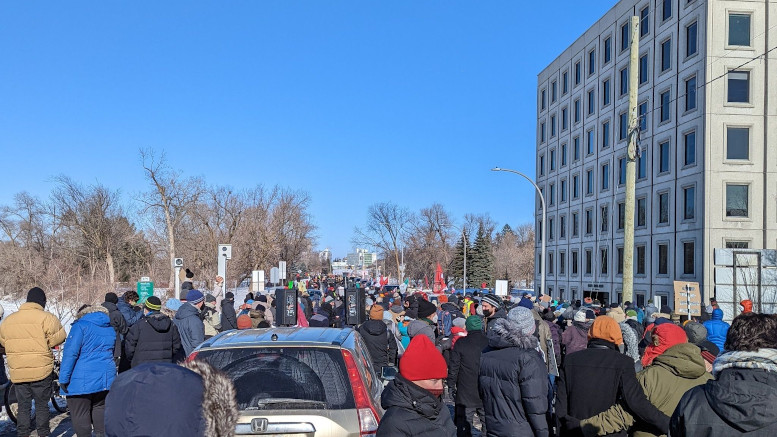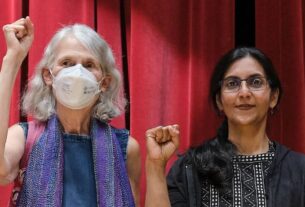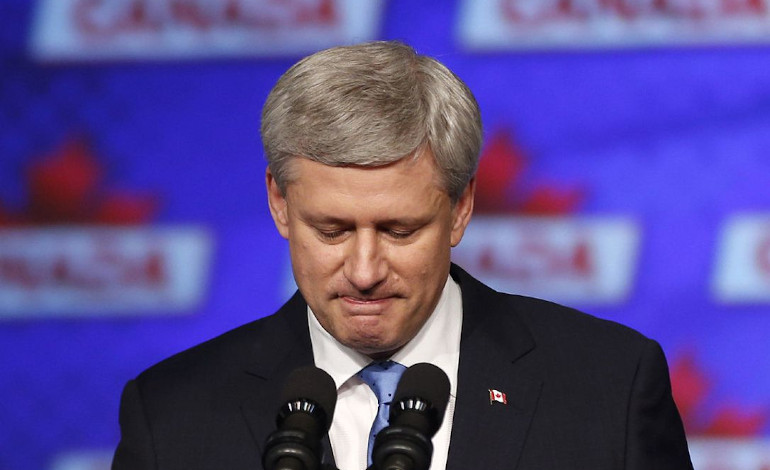While the convoy has been cleared from the streets of Ottawa, many questions need to be asked both about the role of former police and military personnel within the convoy, and the response of the police to the convoy and blockades.
The police’s general motto is “to protect and to serve.” Ottawa’s police department expanded this to read: “I will never betray my integrity, my character or the public trust. I will always have the courage to hold myself and others accountable for our actions. I will always maintain the highest ethical standards and uphold the values of my community, and the agency I serve.”
Mainstream media and regular schooling try to instill into people the idea that the police are a neutral force that dispenses its actions in an even-handed way. Even a quick look at police actions at Black Lives Matter rallies, Indigenous Land Defence or environmental actions demolish the notion of police neutrality. At the campaign to defend increasingly rare old-growth forest at Fairy Creek, the RCMP ripped off people’s COVID-safety masks and directed pepper spray at people’s eyes from a few feet away. In the Wet’suwet’en people’s land defence the RCMP assaulted unarmed Indigenous people with heavily armed force. In both cases the attacks were on people on remote logging roads, not blocking a major highway or a city centre. The clearing of Ottawa’s streets, after three weeks, was gentle by comparison.
The hands-off approach of the police can be explained by two opposing factors: the weakness of the Ottawa police force in size and preparation, and the relative strength of the occupiers — in numbers, but also in tactics, discipline, fundraising ability and logistics. At the same time, another factor has to be the fact that substantial numbers of the police were sympathetic to the aims of the protesters.
RCMP and security services involvement
CBC News reported that “Those involved with its [the convoy] organizing include former RCMP and military officers. A photo taken by a drone showed an overview of a logistics camp set up by protesters in an Ottawa parking lot. Experts say the co-ordination of protesters shows they may have military, police or survivalist training.” Despite claims that the police would cut off supplies to the encampment in the city’s downtown core, the police watched as jerry cans of fuel were carried passed them. Some of the encampment’s success is attributed to the deep knowledge of law enforcement and military tactics that exist in the convoy’s organizational structure.
A group called Police on Guard For Thee, formed during the pandemic, endorsed the truck convoy. On its website, it publicly identifies more than 150 mostly retired police officers who are against government-imposed public health measures, such as vaccine mandates. More than 50 former Canadian Forces soldiers are also named on its site. They say, “The unconstitutional Public Health orders in place have resulted in the permanent closure of countless small businesses, the declining mental health of adults and children, and the tainted reputation of Canadian Law Enforcement.”
The organization says it has “boots on the ground” in Ottawa and has linked to YouTube videos of its members participating in the protest. Furthermore, the leadership team for the protesters includes a former RCMP officer who was on the prime minister’s security detail who quit last year after refusing to get the vaccine and is the convoy’s head of security; a former military intelligence officer who also worked with the RCMP and was considered one of the country’s top counter-terrorism experts; and an ex-military officer who served in the Canadian Forces for 25 years and now works as a freelance software developer.
Weak “opposition”
In a news conference video posted on social media, the ex-RCMP officer gave his assessment of the political and police response in Ottawa, which he calls the opposition. He said, “I would say the opposition (the police) at this point doesn’t actually have a strategy. They have a sort of weak goal and that they want the streets cleared, but they have no real idea how they want to get there.” In the video, he says that during his tenure at the RCMP, he worked with the Integrated National Security Enforcement Team (INSET). INSET was created to thwart terror threats following 9/11 and includes top officials from CSIS, Canada’s spy agency, the Canada Border Services Agency (CBSA) and municipal police forces.
While speaking in the video, the former military intelligence officer bragged to the select reporters about his close relationship with the RCMP, the Parliamentary Protective Service, Ottawa police and Gatineau police. He urged demonstrators to stay “peaceful” and connect with officers on patrol. “[Police] all know that this group is here for everybody, and I make a point of saying to other police officers, when I see them, it’s like, ‘Just so you know, in my mind and in my heart, we’re doing this for all of you as well.'”
Military involvement
On February 13, it was revealed that the Canadian Armed Forces had acknowledged that at least six active soldiers are under investigation after they showed support for the protest against vaccine mandates and other COVID-19 measures. It’s unclear how many of them participated in the protests on Parliament Hill. Two members, part of the elite Joint Task Force 2 unit that works in counter-terrorism, protective services and special reconnaissance, were being investigated over alleged involvement in the convoy protest. Another case involves a major who spoke in uniform in a seven-minute video describing government actions during the pandemic as tyranny. He went on to describe vaccination for COVID-19 as “genocide” and said public health measures were being imposed by “government traitors.”
The Canadian Army has trained the neo-Nazi Azov Regiment of Ukraine’s National Guard, which tortured people and attacked socialists and ethnic minorities in Ukraine. Some of the Azov Regiments’ reactionary ideas may have passed onto Canadian troops.
What did the police did and didn’t do
For most of the three weeks, the encampment organizers had the upper hand over the police. The tents and wooden structures used for kitchens, the supply chain that sprang up, the leisure facilities that were set-up (bouncy castle, hot tub and music stages), all speak to elements of a sophisticated military operation.
In contrast to the police, a community rally of thousands on Sunday, February 13 blocked pick-ups and cars going to support the encampment. People took jerry cans of fuel from the blocked vehicles, but the police declined to take them away.
Until the third weekend of the occupation, police had made only 23 arrests, issued more than 1,500 tickets (mainly for parking offences) and launched more than 80 criminal investigations. In general, police did not crack down on the Ottawa occupation, as it was not a threat to the economy, unlike the blockades at the US-Canada border crossings. But even at the border blockades, police took a gentle approach. The head of the RCMP at Emerson, Manitoba described the result of a week-long blockade as “a perfect solution.” The end of the Coutts’ blockade saw RCMP officers shaking hands and hugging members of the blockade, even though an arsenal of lethal weapons was found among the blockaders and, allegedly, there were plans to murder RCMP officers.
The federal, Ontario and Ottawa police were warned about what was coming. Intelligence assessments warned that “Extremists and other individuals supporting Covid-19 conspiracy theories and violent anti-authority/anti-government views have expressed intent to participate in the convoy and to attend the accompanying protest in Ottawa,” and “could use rudimentary capabilities, such as trucks, cargo and fuel, to cause disruptions to infrastructure.” Yet the three levels of police acted as if Ottawa was facing a Saturday picnic. In the early days, police were seen chatting with convoy members and there were reports of them handing out coffee, and police turning a blind eye to harassments and threats to Ottawa residents.
The law in all its majesty
The French writer Anatole France pointed to the bias of the law over 100 years ago – “The law in all its majesty, forbids the rich as well as the poor to sleep under bridges, to beg in the streets, and to steal bread.” It’s not just the law itself that is the problem. It is how the law is enforced. Karl Marx pointed out that the capitalist state can essentially be reduced to “armed bodies of men.” It should come as no surprise that many of the men and women who constitute these bodies (police and military) are ideologically and organizationally predisposed to take a stance against socialists and the labour movement. When it comes to a right-wing protest like the one in Ottawa, deemed by the state to pose a threat to its political and economic interests, the armed bodies will certainly be mobilized but it will be more drawn out and it will feature less enthusiasm from “the troops.” In the months and years to come, there will be further crises and social explosions in Canadian society requiring the working class to take on board the lessons to be learned from the Ottawa protest.




